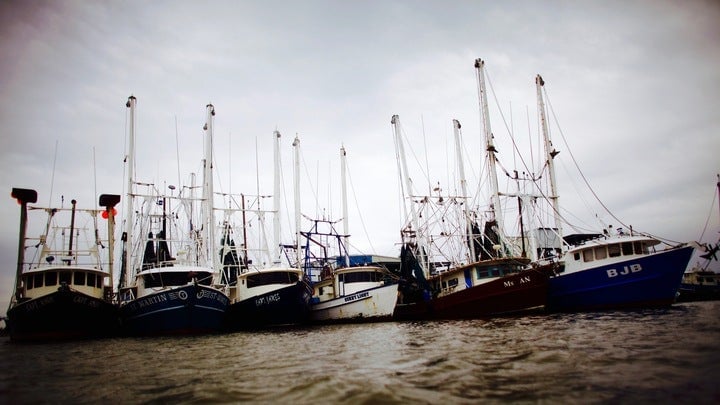A huge dead zone in the Gulf of Mexico will soon change how you order seafood
It would be unseemly to discuss waste at the table. Still, the stuff—specifically agricultural runoff—will affect your dining this summer if you’re a seafood lover. So let’s do this now.


It would be unseemly to discuss waste at the table. Still, the stuff—specifically agricultural runoff—will affect your dining this summer if you’re a seafood lover. So let’s do this now.
Prepare to be scared by the rising cost of seafood, some of which could be scarce due to an especially large dead zone expected in the northern Gulf of Mexico in July. This lifeless area off the coasts of Louisiana and Texas is predicted to be about 8,000 square miles, according to reports by oceanographers (pdf) from the Louisiana Universities Marine Consortium and scientists from the National Oceanic and Atmospheric Administration (NOAA).
As the name implies, a dead zone is an area where life does not grow, mostly. Technically, the water is “hypoxic,” basically choked of oxygen due to excess algae growth, which in turn is caused by chemical runoff. In the Gulf, those chemicals come in great part from farm runoff in the Mississippi River, which influences the chemical composition of water delivered to the Gulf coast.
The Louisiana oceanographers’ report explains what happens every year in the Gulf:
Nutrients from the Mississippi River watershed, particularly nitrogen and phosphorous, fertilize the Gulf’s surface to create excessive amounts of algae biomass whose decomposition in the bottom layer leads to oxygen distress and even organism death in the Gulf’s richest waters.
If it’s as big as predicted, this year’s dead zone will be among the largest measured in the region in the last three decades. Scientists started tracking the lifeless area in the 1970s, and began annual measurements and predictions in 1985. It’s been growing since the 1970s, but researchers believe this year will be particularly bad for sea creatures—and those who earn a living fishing them—based on unusually high nitrogen loads in the Mississippi River measured this May.
To be clear, the dead zone exists year round, but only in summer does it get so big and so solid, extending across so much of the Gulf. Seasonal changes in temperatures and oceanic conditions mean more algae blooms in the bottom layers of the water and sucks all the available oxygen from upper levels, making it difficult for creatures other than the algae to survive. In the summer this green growth chokes the life out of a contiguous shelf of water along the coasts of Louisiana and Texas.
“The low oxygen conditions threaten living resources including humans that depend on fish, shrimp, and crabs,” say the oceanographers. Commercially-important species in the Gulf of Mexico include blue crab, stone crab, crawfish, groupers, menhaden, mullets, oyster, shrimp, red snapper, and tunas. A 2011 NOAA report shows that Louisiana and Texas fishing generated $334 million and $239 million, respectively.
But the quality and quantity of their catch isn’t expected to be great this year and seafood consumers could end up paying a dead-zone premium. A study led by researchers from Duke University, published in the Proceedings of the National Academy of Sciences this year, connected hypoxia and economics and concluded, “Hypoxic dead zones in the Gulf of Mexico drive up the price of large shrimp relative to smaller sizes, causing economic ripples that can affect consumers, fishermen and seafood markets alike.”
There’s some hope: weather conditions could change, improving the situation. Ironically perhaps, a major storm would shake things up, moving waters through the region and leading to a less dire dead zone than currently predicted.